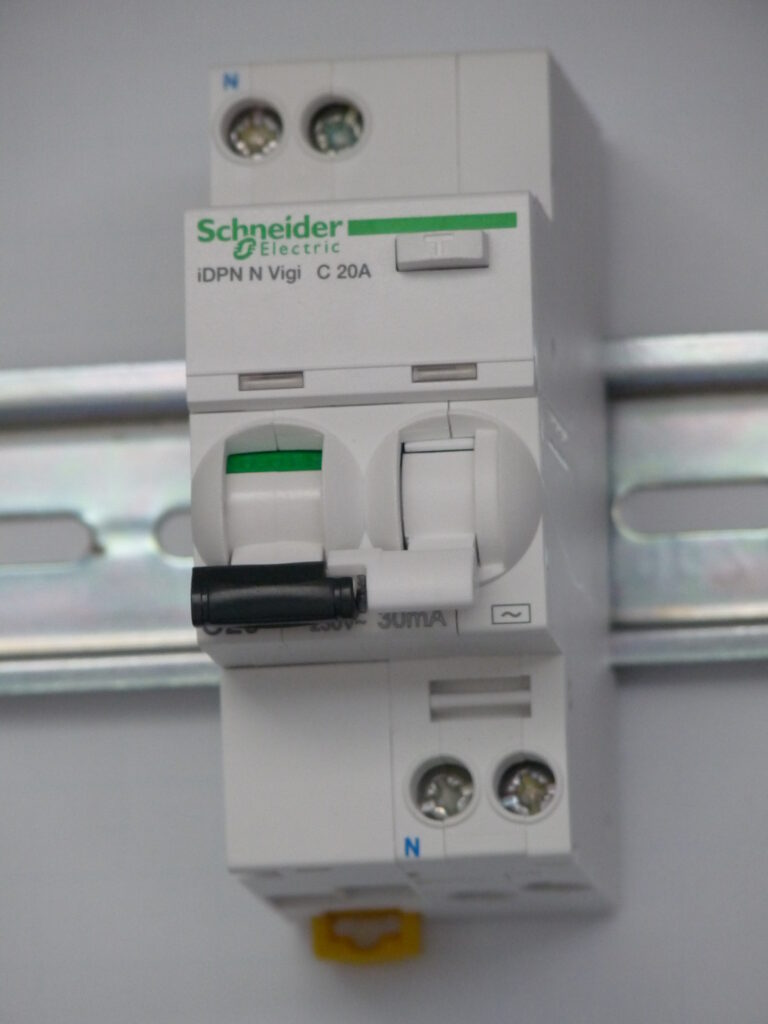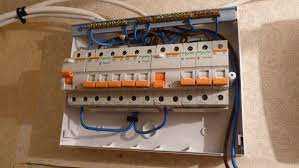Short-circuit protection and overload protection are provided by MCBs.Microprocessor-controlled breakers, or MCBs, act as controlling agents when an abnormal power supply is applied. The mechanism immediately shuts down an electrical system when it detects an overload or power surge. Replaced fuses are one of the most common uses of this device. MCBs come in various types that you can use in residential and industrial applications, depending on the application.
Miniature Circuit Breakers, or MCBs, is an essential component of modern electrical systems. They are designed to protect electrical circuits from overloading, short circuits, and other electrical faults that could cause damage or create a safety hazard. MCBs are compact and reliable, making them popular for residential, commercial, and industrial applications. They work by automatically tripping the circuit when the current exceeds a certain level, which helps prevent damage to the wiring and appliances connected to the circuit. With their ability to quickly and accurately respond to electrical faults, MCBs are a key element in ensuring the safety and reliability of any electrical installation. Check out this article to learn more about what are MCBs?
What are MCBs?

Miniature circuit breakers contain molded insulating materials, which are electromagnetic devices. They switch the circuit, which is their primary function. This means that when circuit (which is connected to it) exceeds a set limit, the circuit will automatically open. As with standard switches, the device may be turned ON or OFF manually.
Multi-contact breakers are time-delay trip devices. In these devices, operating time is determined by the amount of overcurrent flowing through it. Whenever an overcurrent persists for a long period of time, long enough to cause the protection circuit to be damaged, the device operates. In transient circumstances such as motor startup currents or switch surges, MCBs do not respond. If a short circuit occurs, these devices should react within 2.5 milliseconds, and if they are overloaded, they should answer within 2 seconds to 2 minutes.
Read more:An Ultimate Guide About Electromechanical Relay Along With Its Pros, Cons And More
Types of MCBs
Following are the classifications of MCBs according to their fault current tripping range:
- The trip time varies from three to five times the full load current for type B MCBs.
- These are the circuit breakers used in residential buildings.
- It is common for Type C MCBs to trip between 5 and 10 times the full load current.
- Usually used in industrial type applications where there is a possibility of high short circuit current values in the circuit.
- High-current type D MCB: Trips between ten and twenty times its maximum current. Used in particular industrial applications such as heavy motors, welding, electrical transformers, radiography, etc. This type of MCB trips at a current between 8 and 12 times the rated current and is typically used with loads that have large inrush currents.
- Type Z MCB: operates at a current value between 2 to 3 times its rated values.
MCBs of classes K and Z operate very quickly and are used to protect sensitive equipment. They operate very quickly in a brief period.
Working of MCBs
Circuit breakers are triggered by overcurrent, which is electrical energy exceeding a specified safe level. Unlike larger circuit breakers, mini circuit breakers use a relatively robust mechanical mechanism to reduce false alarms.
The bimetallic strip within the MCB bends, becomes heated, and trips when too much current flows through it. You can confine the arc (electric discharge) between electrical contact points by releasing this switch. Arc welding is performed using a metal strip called an arc chute, which separates and cools the arc.
By having MCBs, you can protect against short-circuits and overloads. Overload and short-circuit protection are both detected differently using separate processes. The bimetallic strip uses thermal operation to provide overload protection, while the tripping coil uses the electromagnetic operation to provide short-circuit protection.
When the overcurrent is close to the safety limit, the MCB will trip (activate) more slowly. Within a tenth of a second after the discharge reaches exceptionally high levels, the MCB trips (activates).
MCBs operation
The latch point is displaced when the circuit is overloaded for a prolonged period of time, resulting in an overheated, deformed bi-metallic strip. When the latch is displaced, the spring releases, allowing the moving contact of the MCB to move, opening the MCB. The moving contact is arranged with a latch point, which is activated by spring pressure.
During short circuit faults, the current coil’s magnetomotive force (MMF) or trip coil causes its plunger to strike the latch point again and displace the latch. To operate a miniature circuit breaker, the lever must be moved manually. When the lever is moved from the original position, the same latch point is displaced, resulting in the same separation of the moving contact from the fixed contact.
The latch point is displaced, and the same deformed spring is released, which ultimately results in the movement of the moving contact. In addition to deformation of a bi-metallic strip, a trip coil’s increased MMF, or even a manual operation, the movement could be the cause. There is a high probability that an arc will form when the moving contact is separated from the fixed contact. Before it is finally quenched, this arc travels through arc splitters and up the arc runner. As soon as it is switched on, we reposition the displaced operating latching switches against faults, and providing overload protection for specific equipment or appliances.
Applications of MCBs
The MCB plays a crucial role in maintaining the safety of electric machines and the efficiency of their functioning. In this way, it is found in most electrical appliances, whether domestic or industrial. There are a lot of electrical connections in your home, including lights, heaters, and fans, which require an MCB.
These types of MCB are excellent choices for homes, buildings, and commercial establishments with less electrical equipment. With the proper installation of MCBs, all electrical systems in homes and businesses can be protected and safer. MCBs can be used in the following ways:
· Lighting
Most households have extensive lighting systems. Electrical distribution can be significantly improved by using MCBs in the lighting systems throughout the house. As an example, fluorescent lamps consume a great deal of electricity compared to light bulbs. An MCB comes to the rescue in this situation. MCBs also prevent light bulbs from being damaged and maintain a high level of safety.
· Uses in Industries
Small-scale industries, as well as large-scale enterprises, can both benefit from MCB safety mechanisms. Most industrial machinery requires as much power as 30 kA in ideal circumstances. It may be necessary to replace fuses with MCBs when this occurs. Types of MCB play a crucial role in commercial establishments, as they optimize energy flow and maintain the efficiency of applications and installations. They are installed in hotels, grocery stores, and bakeries.
What do electrical MCBs do?
Miniature Circuit Breakers, often known as MCBs, is designed to guard against overloads and short circuits that can harm cables and other equipment. To safeguard the equipment, MCBs have current ratings (6A, 10A, etc.) below which they will begin to trip or open.
FAQs (Frequently Asked Questions)
In science, how do MCBs work?
Miniature circuit breakers are the full name of MCBs. An automatic switch of this type operates automatically. A circuit can be detected as having a problem by identifying the intense flow of current in the circles.
What does an MCB do?
MCB – Miniature Circuit Breakers causes the bimetallic strip to get heated and bend when a voltage overload occurs through them. The deflection of the bi-metallic strip releases an electrical latch. By stopping the current flowing through the circuit, the latch turns off the MCB.














